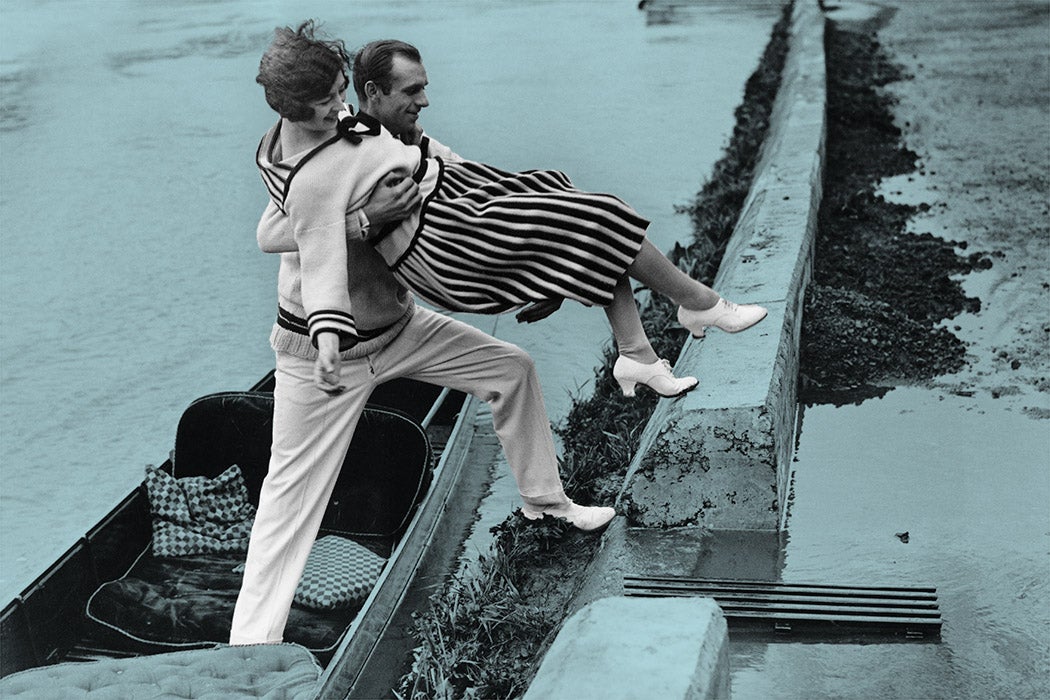Every generation has its different rules when it comes to dating. They are often labyrinthine, maybe even contradictory, but the result was generally two people having fun together. And whatever those rules were for you, they probably weren’t the rules of a generation past, and they’ll seem hopelessly outdated to a new generation. Dating is confusing and complex, and as historian Beth Bailey explains, it always has been. But for would-be couples in the 1920s, it was even more confusing. Dating, as we now know it, was a new thing for middle-class Americans. And it was “a problematic new practice” for them, Bailey writes.
Dating largely replaced “calling,” a practice during which a young man would come to a young woman’s home. Once there, Bailey explains, he would “sit in her parlor, be served some refreshments, perhaps listen to her play the piano.” No going out, no spending money, just an afternoon of respectable activities.
By the 1920s, calling was considered old-fashioned, and dating “became a key ritual of youth culture.” Although people from all economic classes were dating by this time, the roots of the practice were in working class communities, and the term itself came from sex work.
“Its origins were decidedly not respectable,” Bailey explains. “They lay in the practices of ‘treating’ and the sexual exchanges made by ‘charity girls’…. The very term ‘date’ came from prostitution.”
However, as dating aged as a practice, knowledge of its history (both class and linguistic) faded.
In the run up to World War II, popularity for a young person meant going on lots of dates with lots of different people. As one sociologist observed in the 1930s, popularity meant dating success—especially for women. Like many things, notions of popularity were gendered. For men, popularity was connected to material things such as cars and nice clothes. For women, it
depended on building and maintaining a reputation for popularity. They had to be seen with many popular men in the right places, indignantly turn down requests for dates made at the “last minute,” which could be weeks in advance, and cultivate the impression that they were greatly in demand.
Having just the one boy coming to pick you up was fine—if that’s all you could get. But as a 1940 article in the Woman’s Home Companion noted, “The modern girl cultivates not one single suitor, but dates, lots of them…. Her aim is not a too obvious romance but general popularity.”
Dating was more about image and competition than romance. Etiquette books at the time even cautioned against dancing with one partner too long; someone (or even better, lots of someones) needed to cut in to make it seem like you weren’t a social failure.
By 1950, though, things had changed. “Going steady,” or having just one partner, became the “in” thing. This focused approach to dating may have “provided a measure of security from the pressures of the postwar world,” Bailey writes. The war also saw marriage rates increase, in part because of fear that a partner might not return from battle and in part because many had delayed marriage during the Depression; an improving economy finally allowed them to marry. Marriage ages also lowered. In 1939, American women married at an average age of 23.3; by 1959, 47 percent of new brides were married before age nineteen. Dating was just practice for the inevitable marriage.
Weekly Newsletter
Dating and going steady were about staking out a future, but there was one element that parents didn’t count on—sex. Bailey explains that going steady also meant “greater sexual intimacy.” To curb that, advice books began to give some old advice: date around a bit.
“Better to date lots of strangers,” one author urged, “than end up necking with a steady boyfriend.”
By the 1960s, the new rules were “undermined by a widespread sexual revolution,” Bailey writes. And since the 1970s, she argues, “no completely dominant national system of courtship has emerged.” So the old rules might be the new rules, and the new rules might be completely wrong by tomorrow. But beware of nostalgia, Bailey warns. Those who long for the “good old days should first understand the complicated history of the date.”







